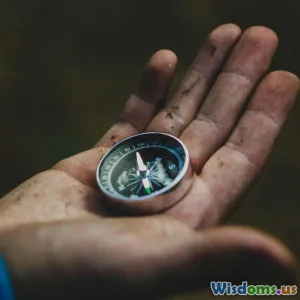
How Lost Hikers Found Their Way Home Stories That Inspire
6 min read Explore inspiring tales of lost hikers who relied on grit and survival skills to find their way home. (0 Reviews)
How Lost Hikers Found Their Way Home: Stories That Inspire
Getting lost in the wilderness is a fear many outdoor enthusiasts share. Yet, amidst daunting challenges, there are remarkable stories of lost hikers who tapped into crucial survival skills, perseverance, and quick thinking to make their way back to safety. These narratives not only captivate but also educate and inspire adventurers worldwide on the importance of preparedness.
The Power of Resilience and Survival Knowledge
When faced with disorientation in the wild, mental toughness combined with practical survival knowledge often becomes the key to survival. Consider the experience of Chris McCandless, whose journey into Alaska’s wilderness was fraught with missteps but ultimately highlighted the necessity of knowing terrain and environment before venturing in.
In contrast, other hikers like Sarah Marquis survived alone by utilizing fundamental survival techniques: finding water, reading natural signs, and rationing energy. Marquis walked thousands of kilometers across deserts and mountain ranges, underscoring that resilience is just as vital as physical skills.
Example: Aron Ralston’s Improbable Survival
Perhaps the most famous recent case is that of Aron Ralston, who, trapped by a boulder in a remote Utah canyon, had to amputate his own arm to survive. His story encapsulates determination, the presence of mind, and the brutal choices that survival sometimes demands. Ralston’s experience has educated many about the significance of informing others about one’s hiking plans and preparing for emergencies.
Navigational Techniques That Saved Lives
Lost hikers often confront the daunting task of navigation without digital tools. Before GPS technology, survival hinged on an ability to interpret natural cues.
-
Using the Sun and Stars: Hikers like Ed Stafford, the first person to walk the entire length of the Amazon River, relied on celestial navigation when their technology failed. By understanding where the sun rises and sets or spotting constellations like the North Star, these adventurers realigned themselves and avoided further disorientation.
-
Reading Landforms and Waterways: Another common technique is following water sources downstream, as rivers often lead to inhabited areas. This strategy proved crucial in the 2019 rescue of two lost hikers in New Zealand’s Fiordland, where they used a small creek to locate a stream they heard during their trek, ultimately guiding them back to safety.
-
Improvised Tools: In some cases, simple compass improvisations—like a magnetized needle floating on a leaf—helped determine direction. Knowledge like this can transform hopelessness into hope.
Psychological Impact and Mental Strategies
Survival isn't only a physical challenge—it’s psychological. Panic can be a hiker’s worst enemy. Experienced survival experts advocate staying calm, setting small goals, and keeping a positive mindset.
Real-World Insight: The Lost Hiker’s Mindset
According to outdoor psychologist Dr. Suzanne Simard, "Mental resilience must be trained like muscle memory." She notes that coaching in how to respond to anxiety can greatly improve survival outcomes. This partially explains why some people survive for weeks in the wilderness.
The 2006 story of a 14-year-old Australian girl lost in the Blue Mountains illustrates mental fortitude. She stayed put, found shelter, and maintained hope until rescuers found her six days later. Her careful choices were critical elements in preserving strength.
Lessons Learned From Rescue Operations
Rescue teams often share data that point to common mistakes and lessons to prevent hiking accidents:
- Inform Someone: Always tell a trusted contact about routes and expected return times.
- Carry Essentials: Items like maps, whistles, and survival blankets can make a life-or-death difference.
- Stay Put if Lost: Sometimes staying nearby increases chances for searchers to find lost hikers.
In one high-profile rescue mission in the Rocky Mountains, the lost hiker’s ability to send smoke signals from a signal fire accelerated the search process, demonstrating ingenuity and presence of mind.
Conclusion: Transforming Fear into Empowerment
The inspiring stories of lost hikers highlight the convergence of preparedness, survival skills, instinct, and sheer human will. For adventurers, these accounts emphasize that nature’s unpredictability demands respect and readiness.
Learning from these real-world experiences enables outdoor enthusiasts to equip themselves with essential skills—from basic navigation to mental toughness. Ultimately, the wilderness tests not only our physical limits but also our capacity to adapt and overcome.
Whether you’re a seasoned mountaineer or a casual weekend hiker, the lessons distilled from these survivors serve as a powerful reminder: being prepared can turn a daunting ordeal into a triumphant tale.
Stay curious. Stay prepared. And above all, respect the great outdoors.
Rate the Post
User Reviews
Popular Posts





















